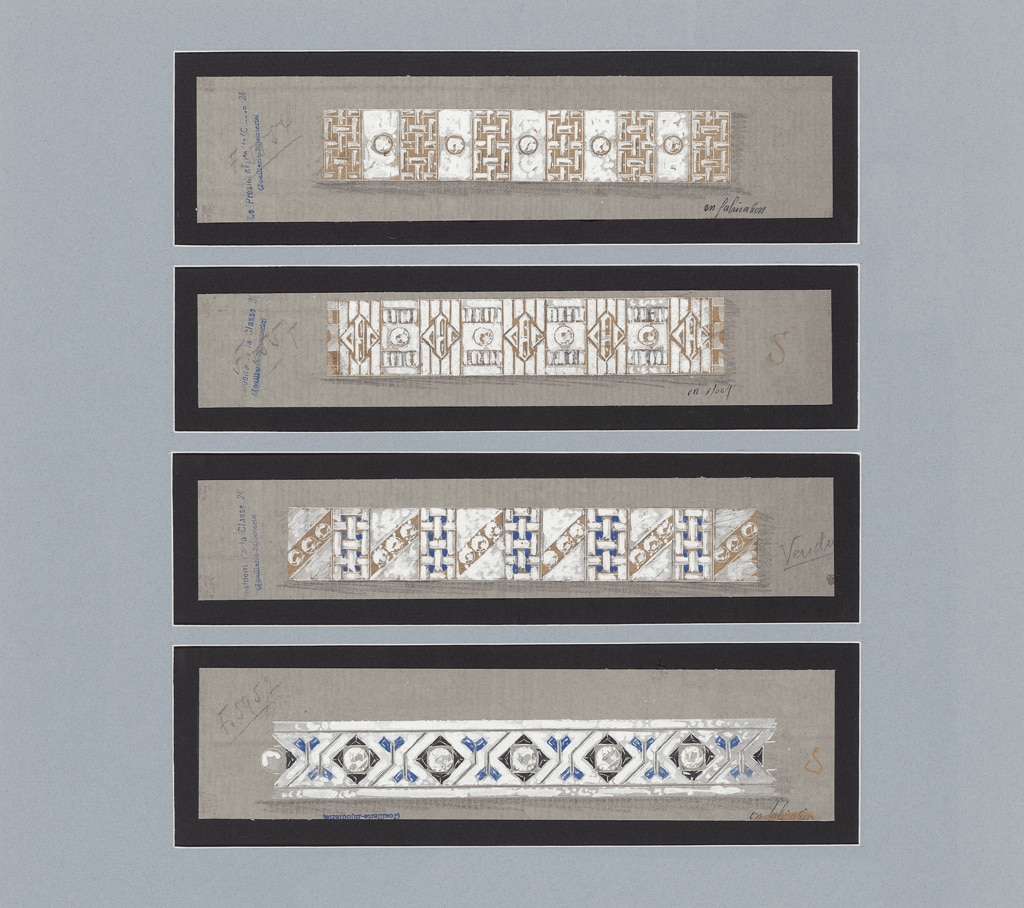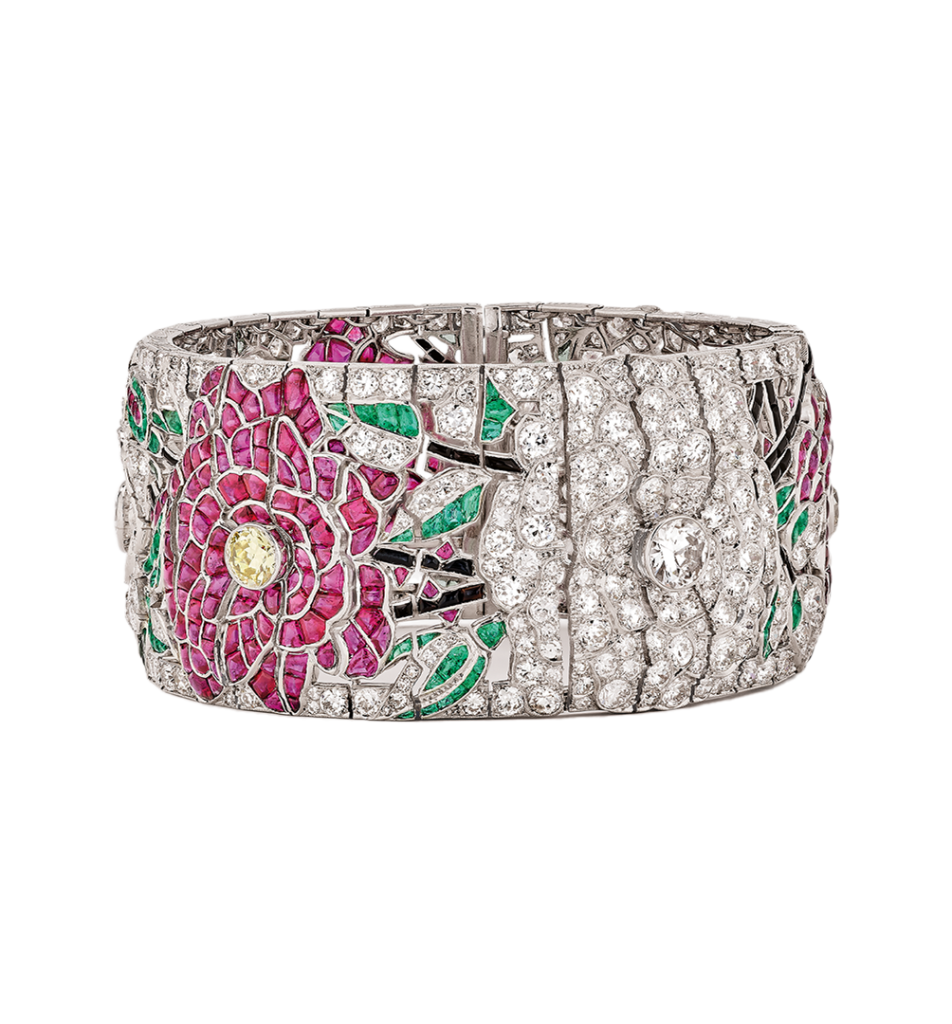The Exposition internationale des arts décoratifs et industriels modernes (International Exhibition of Modern Industrial and Decorative Arts) held in Paris from April to November 1925 celebrated the decorative arts.
It was the first major exhibition in which Van Cleef & Arpels participated, in line with Émile Puissant’s policy of giving greater visibility to the Maison, an approach that began with the creation of “special sales” and the Maison’s participation in the Salon du goût français (Salon of French Taste) in 1921. This momentum was corroborated with the arrival of the designer René Sim Lacaze in 1923.
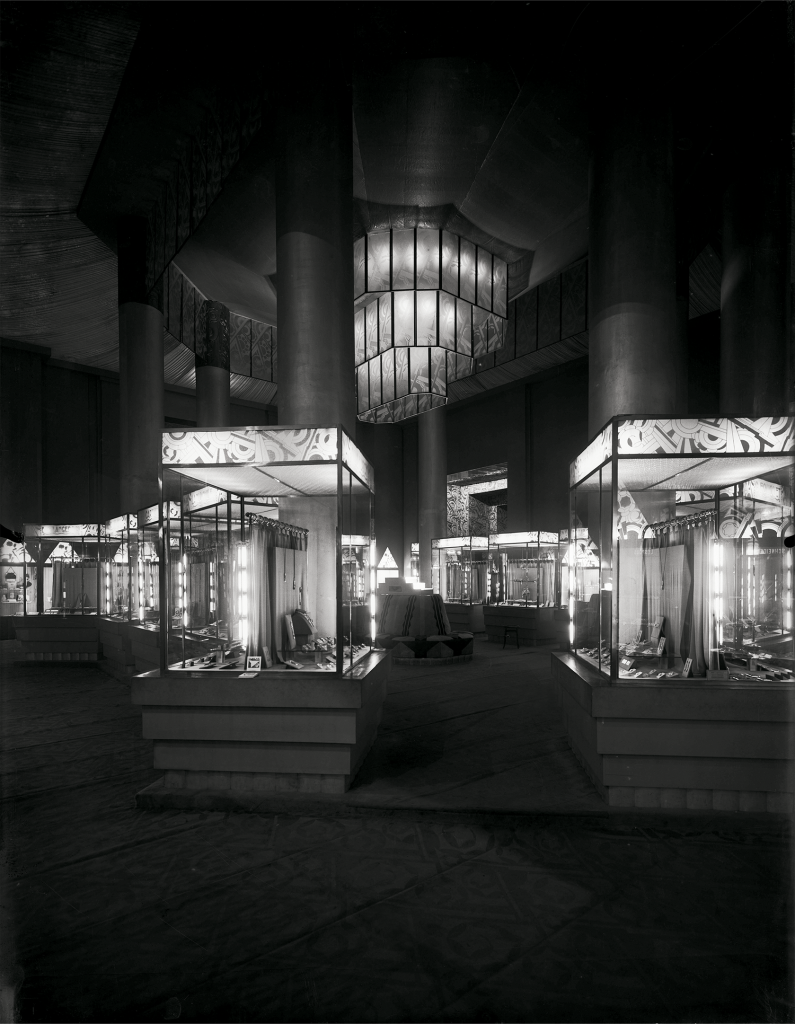
The Fleurs enlacées, roses rouges et blanches bracelet representing the first Art Deco style
The Fleurs enlacées, roses rouges et blanches bracelet, one of the pieces of jewelry awarded a Grand Prix at the Exposition, embodies, in terms of jewelry, the apogee of the first Art Deco style that emerged towards the end of the second decade of the twentieth century. It was exhibited on the stand alongside a brooch of similar design, with two roses in full bloom: one of brilliant-cut diamonds, the other of buff-top rubies with a yellow diamond at its center. Although stylized here, the rose motif was considered a traditional element of eighteenth-century decorative vocabulary.
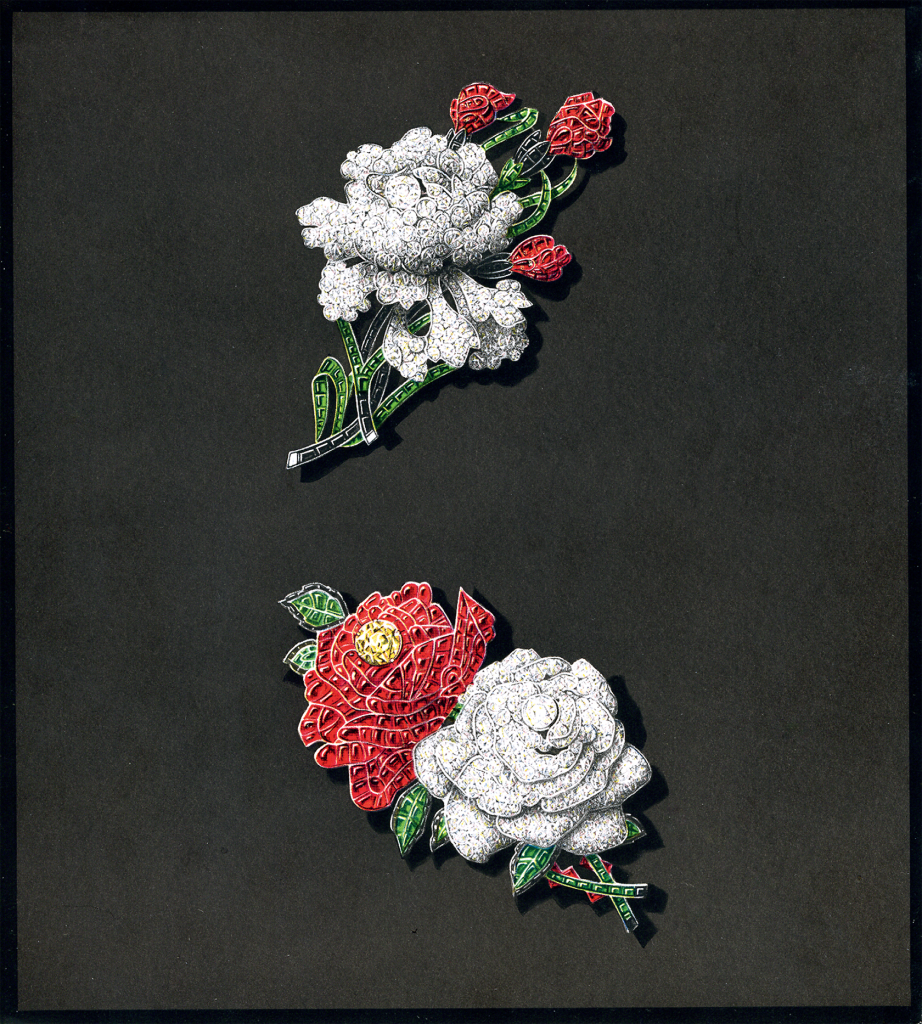
The Exposition had been in preparation since the turn of the century and served as the link between the esthetic of the 1910s and that emerging at the start of the 1920s, namely early Art Deco, embodied by André Groult ou Jaques-Émile Ruhlmann.
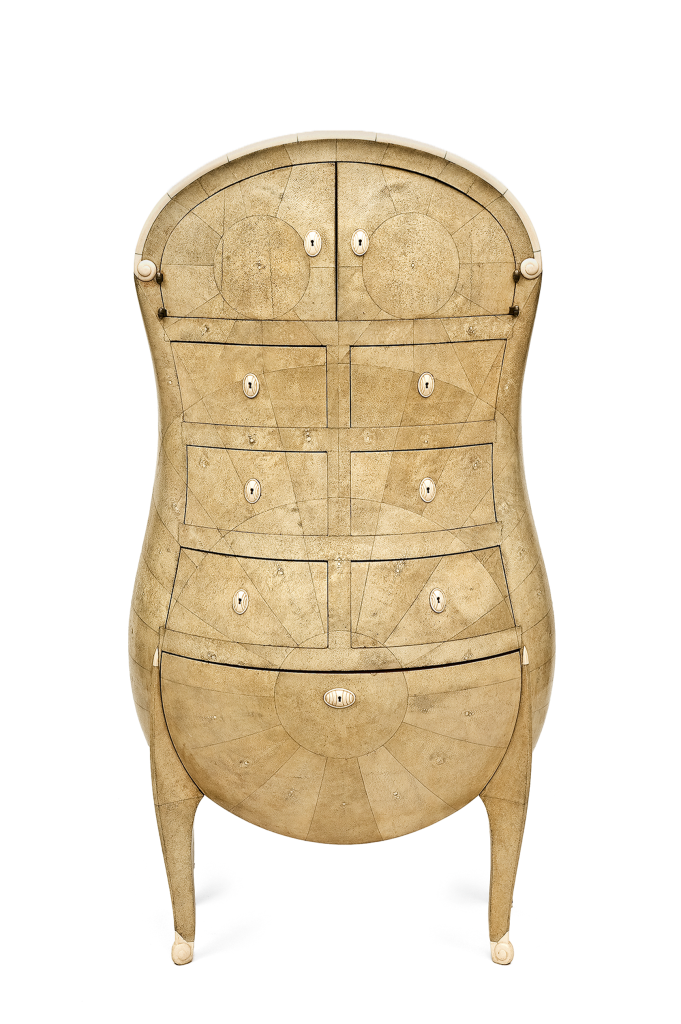
150 × 77 × 32 cm. Paris, Bibliothèque des arts décoratifs. © 2024, ProLitteris, Zurich.
The influence of cubism upon Art deco jewelry
This French ornamental tradition nonetheless existed alongside a more radical geometrization typified by avant-garde work from the start of the century. “Jewelry designers” looked to cubism to renew their decorative language. The 1925 Exposition internationale sanctioned these new esthetics. Thus, for the pavilion called Une ambassade française, Robert Mallet-Stevens designed a hallway with fixtures and fittings celebrating the straight line. The sobriety of this interior, devoid of any ornamentation, does justice to the Cubist works of Robert Delaunay and Fernand Léger. Reinforced concrete Cubist-style trees, made by Jan and Joël Martel according to designs by Mallet-Stevens, completed this architectural and decorative ensemble.
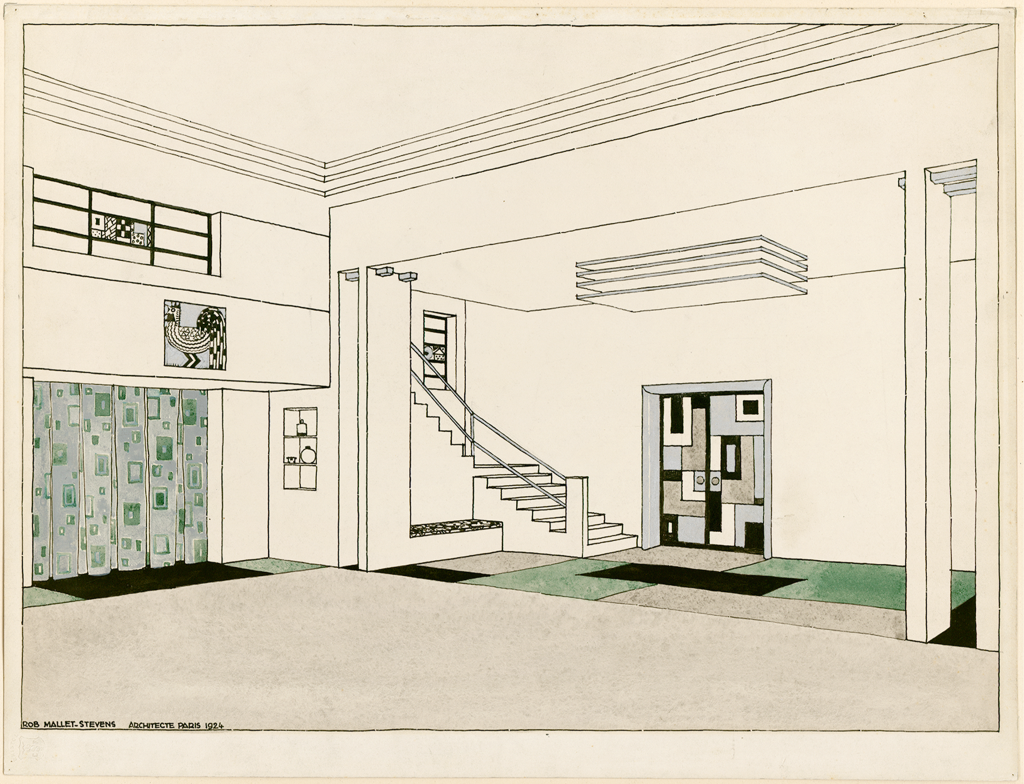
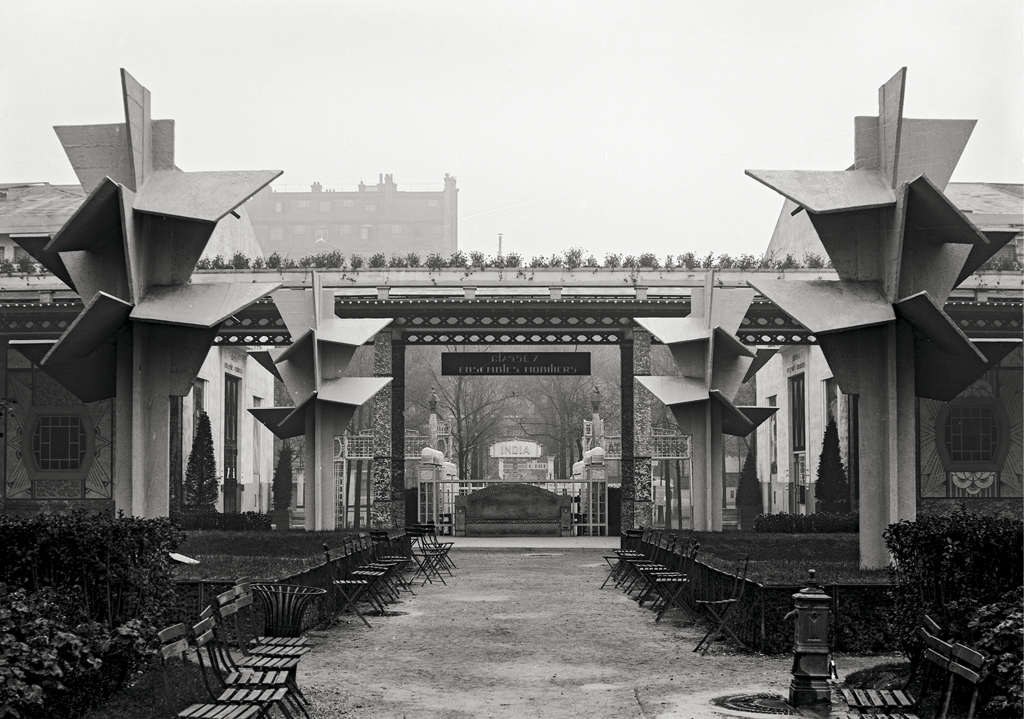
The baguette cut in geometrical simplification’s service
Within the jewelry arts, Cubism introduced new cuts of diamond, like the baguette cut, that enabled angular combinations of gemstones, as seen in two band bracelets exhibited by Van Cleef & Arpels in the XXIV Category. Both were composed of repetitive elements of simple interlocking geometric forms. The one illustrated in the Exposition’s general report, moreover, is typified by its extreme proportions and its link structure, foreshadowing the jewelry of the late 1920s and 1930s.
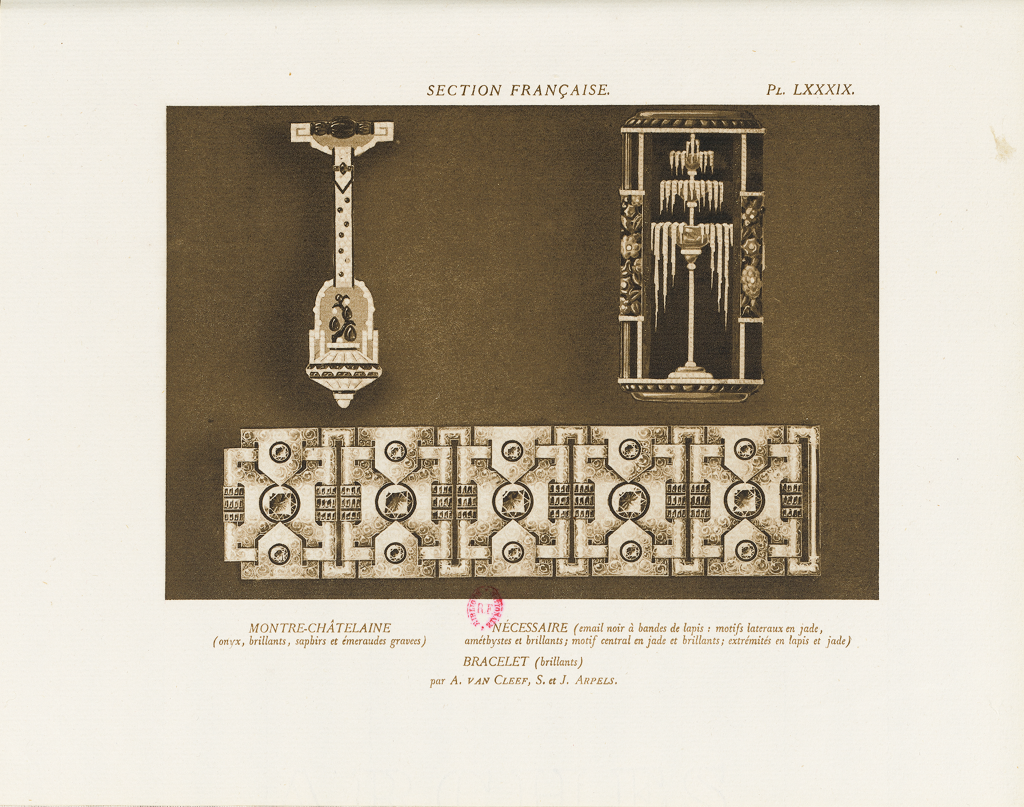
Art Deco plurality
The 1925 Exposition internationale emphasized a pivotal moment in the history of the decorative arts when two stylistic trends coexisted: it celebrated the apogee of the Art Deco style that had been taking seed since the 1910s and heralded the modernist movement. The works presented at this event by Van Cleef & Arpels fully embodied this plurality of the Art Deco movement.
